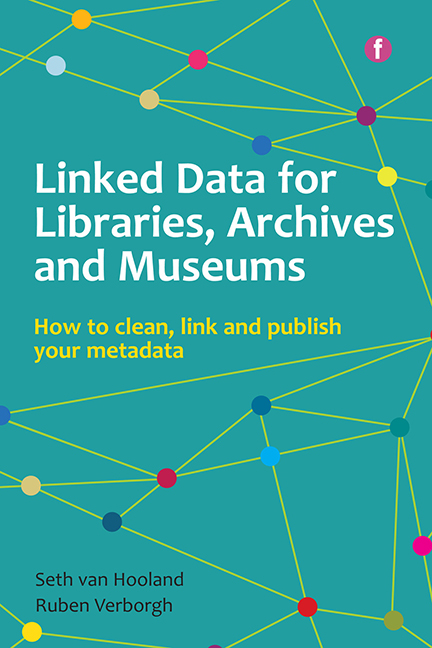2 - Modelling
Published online by Cambridge University Press: 10 September 2022
Summary
Learning outcomes of this chapter
• Putting linked data in a larger context
• Getting out of a hype-driven view on technology
• Understanding the importance of data modelling
• Making sense of data models and their serialization formats
Introduction
Metadata managers and the software they use often seem to have a striking resemblance with couples stuck in an unhappy relationship. During coffee breaks at conferences and workshops on metadata within the library and information science domain, it will not take you long to spot a circle of people engaged in what seems to be some form of group therapy. Do not be afraid. Go ahead and stand a bit closer. You will probably overhear typical phrases such as ‘We have been struggling to create new metadata fields for years!’ or ‘My XML export is terrible!’ Confronted with these laments, the group members will nod understandingly and express their sympathy. Complaining about one's software is a popular point of discussion across the globe when collection holders come together to discuss metadata. Ironically, just like old couples who think twice about divorce due to the important emotional and economic consequences, metadata managers often persist for years in the abusive relationship with their software. They usually prefer not to move over to another software solution.
How different the ambiance in the digital humanities! Instead of complaining about the difficulties encountered with their database, people active in the digital humanities often are very proud about the information system they built to manage a specific type of resource or collection. Susan Hockey even coined the expression ‘“Me and my database” papers’. Anyone who has already attended a DH conference is familiar with the phenomenon: a researcher who presents, in tedious detail, how a database was developed to accommodate every peculiar feature of a collection. These speakers tend to be very proud of the database they constructed and radiate love and passion for it.
Why do these two communities have such a different approach to the software they use to manage cultural heritage resources and their metadata? Why do collection holders constantly whine about their database, whereas digital humanists express their satisfaction and even brag about the happiness they found with their database?
- Type
- Chapter
- Information
- Linked Data for Libraries, Archives and MuseumsHow to clean, Link and Publish your Metadata, pp. 11 - 70Publisher: FacetPrint publication year: 2015

